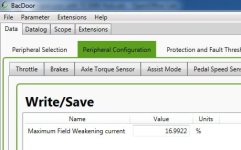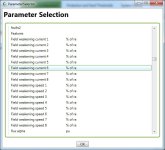okashira said:That would be fine also.\/ampa said:Since they run different voltage now. Its better to say another dyno test with 500W power draw from both.okashira said:Can you do one more at ~13 amps? I would LOVE to see how things look at a partial relative load.
Here it is. The infineon trapezoidal controller was at 48.0V with a 12.0 current limit set via a CA, wile the BAC500 FOC controller was run at 51.4V with an 11.2A current limit. So 575 watt input power limit in both cases, and the same unloaded RPM in both cases. The CA had a much easier time regulating the battery current draw on the FOC with it's torque throttle, while the infineon controller had a fair amount of feedback oscillation just as it was transitioning to the amps limit around 420 rpm, and you can see the corresponding scattering of torque and power data..
Overall, the performances are quite close near the top end of the speed range, but as the motor is loaded and slowed down then the FOC shows the same improved torque and efficiency which we were seeing before.
At this power limit, the FOC system was able to stay ABOVE 80% system efficiency from 160 rpm all the way to 450 rpm, which is impressive for a direct drive transmission considering that not too long ago we were lucky when the motors 'peaked' at ~81%.





